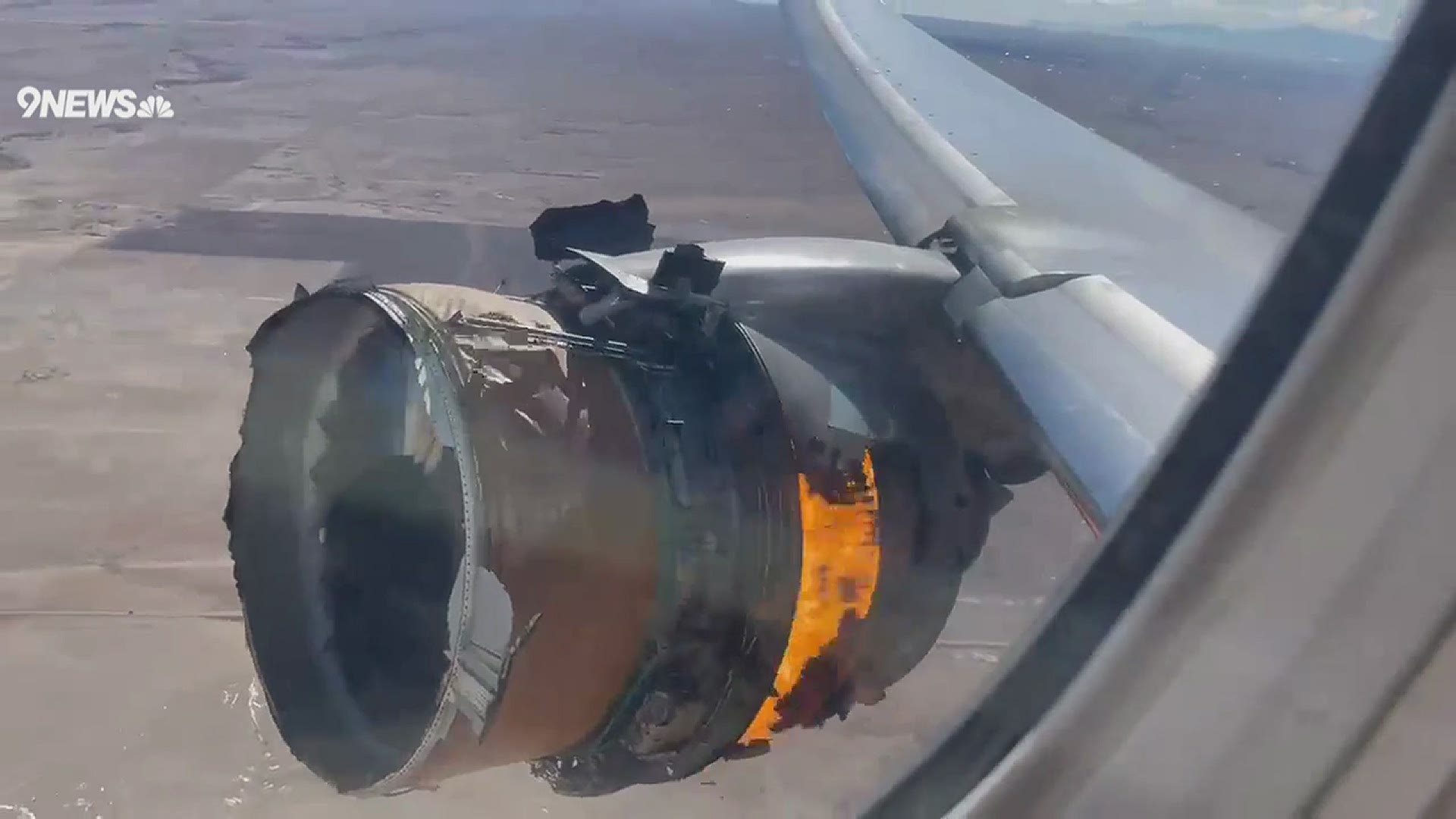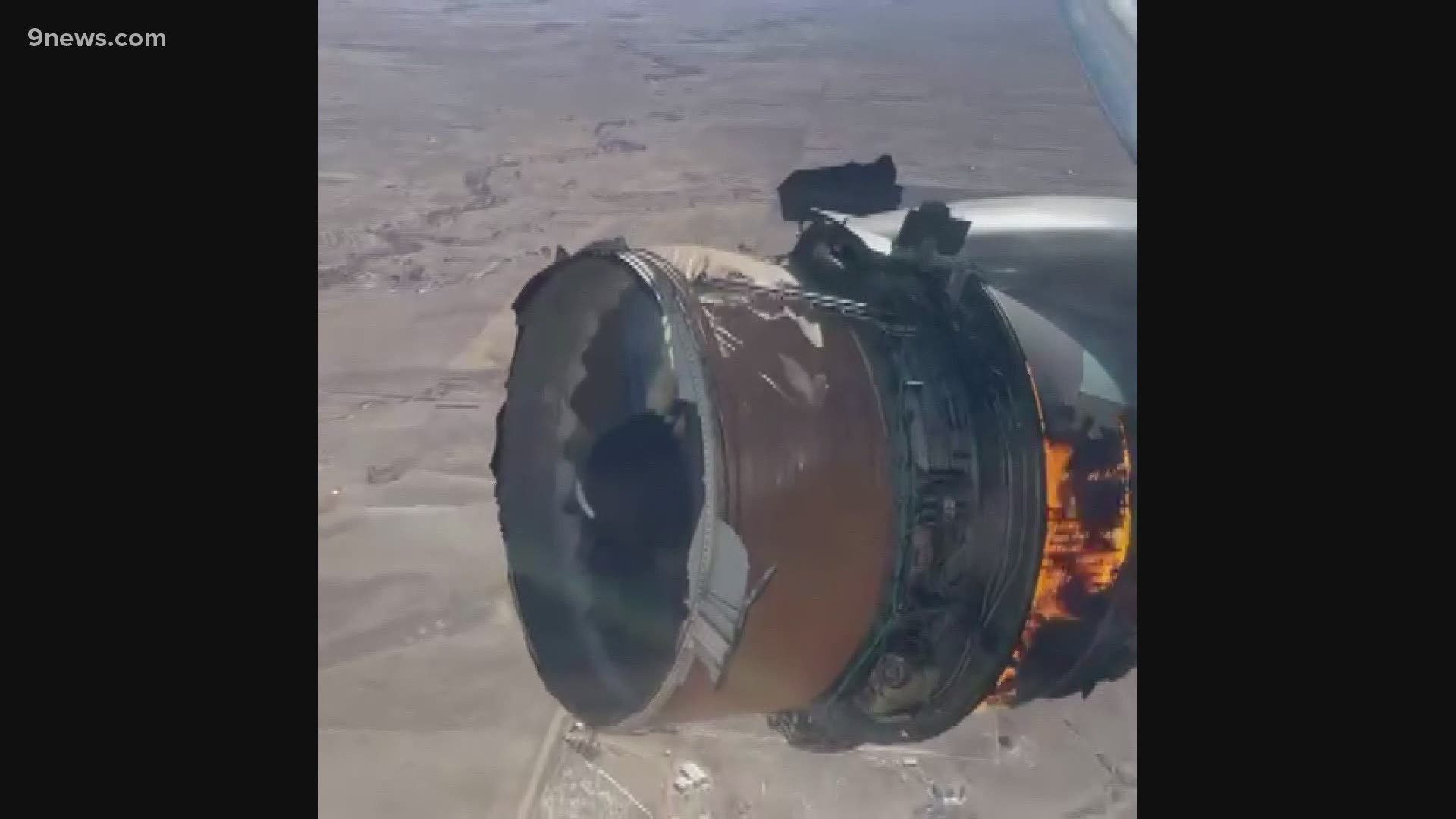DENVER — The investigation is beginning into what caused United Airlines Flight 328 to experience catastrophic engine failure and drop airplane parts on Broomfield neighborhoods on Saturday afternoon.
The Boeing 777, which was a flight from Denver to Hawaii, returned safely to Denver International Airport, and no one on board or on the ground was injured. There are a lot of questions into what happened and what investigators will be looking for.
9NEWS aviation expert Greg Feith breaks down some of what we know so far and what to expect as the National Transportation Safety Board (NTSB) investigates the incident.
> Video above: 9NEWS aviation expert Greg Feith discusses the debris that fell on Broomfield and what's next for the investigation.
Editor's note: Responses have been edited for context and clarity.
What kind of debris fell and what can it tell investigators?
With the debris that fell, there are the large pieces that are extremely heavy. The ring that fell in that gentleman’s front yard weighs several hundred pounds. You have large pieces like that, but then there are internal components of the engine that you can basically hold in your hand, and those could be critical clues for investigators.
In photos of the debris, you’re looking at parts of the front end of the engine cowling. That’s the part that you can typically see from the passenger cabin. You’re looking at not only the front end but also the remainder of the cowling that shields the rest of the engine. Those are the parts that came off.
What you see in the videos is the heavy structure of the engine. That’s where there’s a compressor -- where fuel goes in and burns to create the exhaust that comes out of the engine. You can see there’s still fuel being fed in that engine. That’s why you see a fire in the exhaust section of the engine.
When investigating this kind of incident, where will the NTSB start?
When you’re looking at these kinds of pieces, some of it has some very telltale evidence as to how those pieces came off the engine. This engine is made up of a variety of different fan blades, turbine blades and compressor blades. When these blades fail, they fail catastrophically. They create a lot of shrapnel. These little parts and pieces will be critical. The key is to find and determine what the origin of that failure is, and one of those key pieces may be in someone’s yard.
How did the plane make it safely back to DIA?
These aircraft are certified to fly on one engine, given that it’s only a two-engine aircraft. The FAA (Federal Aviation Administration) requires that a manufacturer build an airplane that has substantial thrust so that the aircraft, in the event of an engine anomaly or failure such as this, can continue to fly safely on one engine. That was demonstrated yesterday by the safe return back to DIA.
What decisions would the airplane's crew have to make to get the plane safely back to DIA?
Any time you have a catastrophic failure of an engine, the crew members are the sole authority in controlling that airplane and making decisions on the best course of action to get the airplane back to the airport. While they can get assistance from air-traffic control to clear the air space and get other airplanes out of the air, it is up to that crew to make sure that they have full control of the aircraft.
This is a critical situation because the aircraft is heavy, low and slow. They are full of gas, and they are just starting the flight, so they have full tanks of fuel, and of course the aircraft is heavy. The landing gear can only take so much on landing, and the crew could create more structural damage if they land overweight. There are a lot of decisions that go into this, but the crew is the final authority to determine how that aircraft gets back to the airport.
What kind of training do crews have to handle crisis situations?
From initial training through recurrent training, these flight crews are trained to handle emergencies like catastrophic engine failure and engine shutdowns. It’s done on a very regular basis so that they are very comfortable. Because of their training, they were able to handle this situation in a thorough, methodical and prescribed way. We have a phrase in aviation: Train the way you fly, fly the way you train. It's obvious that the training paid off yesterday.
Before takeoff, what does the inspection process look like from beginning to end?
The flight inspection is a walk around by one of the pilots, the copilot or the captain and they will walk around just looking for obvious mechanical damage. Let's say something may have struck the leading edge of the wing and there’s a dent in it, they’re looking for obvious signs of damage. In the engine inlets, they look for any kind of debris.
When you look at this picture and see one of the blades broken, what does that tell you?
So when you’re looking at them, of course you’re looking for any kind of external source of damage like a bird strike or a drone, or something that got ingested into the engine. If you look at just a blade and a half being damaged it’s contained to those blades, so it’s more of a mechanical event rather than some sort of external event. Typically when we’ve seen some broken blades, they get ingested into the engine and then they create more damage as they go front to back.
Unless there was some obvious damage to that blade, most likely there wasn’t or the pilot would’ve flagged it, this was an internal failure of the blade.
How often do broken blades lead to engine failures?
it just so happens that this particular series of engines on the Boeing 777 airplane happens to have a history, it’s not a chronic history, but it does have a history of similar failures. we have seen other blade failures, fan blade failures on different makes and models of engines for a variety of different reasons.
What steps might the FAA or NTSB take after this investigation is complete and they find the blades caused the engine failure?
The FAA could determine that they need to do a more thorough inspection on a more streamlined interval. Let’s say that these blades are required to be inspected every 5,000 hours of operation, they may scale that down to every 3,000 thousand hours or something to that effect. They’re going to determine what the best course of action is based on the findings of the investigation and what they determine is probably the origin of a fatigue type crack. It may take microscopic inspection, it may put a life limit on it and say 'hey, after so many hours of operation, you just have to change the blade', things like that.
>> Listen to 911 calls reporting the falling debris and fire in the sky
SUGGESTED VIDEOS: Local stories from 9NEWS




